Preparing to Sew: Things You Need to Know
Sewing is not just a hobby; it’s an art form that allows you to express your creativity and transform fabric into beautiful creations. Whether you're aiming to make a simple pillowcase or a stunning dress, preparing to sew can feel a bit overwhelming for beginners. But don’t worry! With the right tools, techniques, and knowledge, you’ll be on your way to sewing success in no time. In this article, we will cover essential tips and information for beginners preparing to sew, including tools, techniques, and common practices to ensure a successful sewing experience.
Understanding the basic tools required for sewing is crucial. Every sewing journey begins with a well-equipped sewing kit. So, what should you have in your arsenal? Let’s break it down:
- Sewing Machine: This is your best friend in the sewing world. Choose one that fits your needs and budget.
- Fabric Scissors: A good pair of scissors is essential for cutting fabric cleanly.
- Measuring Tape: Accurate measurements are key to a successful project.
- Pins and Pincushion: These will hold your fabric pieces together while you sew.
- Thread: Always have a variety of thread colors to match your fabrics.
These tools will set the foundation for your sewing projects, making the process smoother and more enjoyable.
Selecting the appropriate fabric is key to successful sewing projects. The fabric you choose can make or break your creation. Are you looking for something soft and flowy, or sturdy and structured? Understanding the different types of fabric will help you make the best choice. Here are some popular fabric types:
- Cotton: Great for beginners. It’s easy to work with and comes in a variety of prints.
- Silk: Luxurious but tricky. Perfect for advanced projects.
- Denim: Durable and great for casual wear.
Each fabric has unique properties that affect its use in sewing. When choosing fabric, consider its weight, drape, and stretch. For instance, heavier fabrics like canvas are great for bags, while lightweight fabrics like chiffon are perfect for flowing garments. Understanding these characteristics will help you make informed choices that align with your project goals.
This section compares natural and synthetic fabrics, detailing their advantages and disadvantages to guide you in selecting the right material for your needs. Natural fabrics like cotton and linen are breathable and often more comfortable, while synthetic fabrics like polyester are durable and easy to care for. Here’s a quick comparison:
| Fabric Type | Advantages | Disadvantages |
|---|---|---|
| Natural | Breathable, comfortable | Can wrinkle easily |
| Synthetic | Durable, easy care | Can be less breathable |
Understanding how to care for different fabrics is essential. Each fabric type has specific care instructions that can affect its longevity and appearance. For example, while cotton can usually be machine washed, silk may require hand washing or dry cleaning. Here are some tips:
- Washing: Always check the care label before washing.
- Drying: Some fabrics should be air-dried to prevent shrinkage.
- Ironing: Use the appropriate heat setting for each fabric type.
Learning how to read and understand sewing patterns is vital for beginners. Patterns are like a roadmap for your project, guiding you through the construction process. Familiarize yourself with pattern symbols and terminology to simplify the process and avoid confusion.
This part will introduce fundamental sewing techniques that every beginner should master. From basic stitches to more complex methods, these skills will serve as the backbone of your sewing journey.
Familiarizing yourself with basic stitches is essential for any sewing project. The most common stitches include straight stitches, zigzag stitches, and backstitching. Each serves a unique purpose, from securing seams to adding decorative elements. Practice these stitches to build your confidence and skill level.
Finishing techniques are crucial for achieving a polished look. Methods like serging and bias binding not only prevent fraying but also enhance the durability of your projects. Mastering these techniques will elevate your sewing game and give your creations a professional touch.
Q1: What is the best sewing machine for beginners?
A: Look for a machine that is user-friendly, has basic stitches, and fits your budget. Brands like Brother and Singer offer great options for beginners.
Q2: How do I choose the right fabric for my project?
A: Consider the type of garment you’re making, the season, and your skill level. Start with cotton for easy projects.
Q3: Can I learn to sew on my own?
A: Absolutely! There are plenty of online tutorials, videos, and books available to guide you through the process.
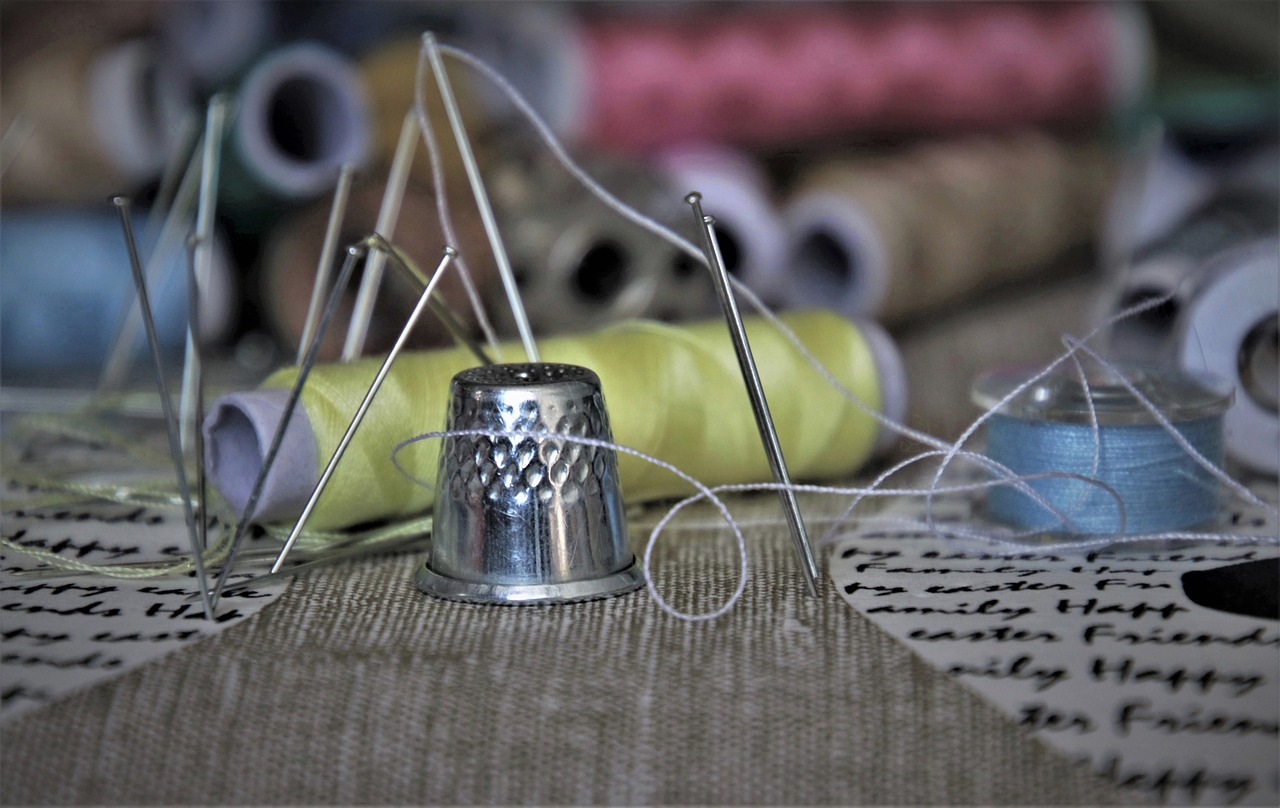
Essential Sewing Tools
When you're starting your sewing journey, having the right tools can make all the difference between a frustrating experience and a fun, creative one. Think of your sewing kit as your toolbox—without the right tools, how can you expect to build something beautiful? So, what do you really need to get started? Let’s dive into the essential sewing tools that every beginner should have on hand.
First and foremost, a good sewing machine is crucial. While you might be tempted to pick up the cheapest model, investing in a reliable machine will save you time and headaches down the road. Look for machines that offer a variety of stitches and are easy to operate. A machine that has a straightforward manual can be your best friend as you learn the ropes.
Next up, you’ll need fabric scissors. These aren’t just any old scissors; they’re specially designed to cut fabric cleanly and accurately. Using regular scissors can lead to frayed edges and uneven cuts, which could ruin your project before it even begins. Pair your fabric scissors with a rotary cutter and a cutting mat for even more precision, especially when working with straight lines.
Don’t forget about pins and a pin cushion. Pins are your best buddies when it comes to holding fabric pieces together before you sew them. A pin cushion keeps your pins organized and easily accessible, avoiding the dreaded search for a runaway pin. You might also want to invest in clippers for snipping threads and trimming seams, as they can make your sewing process much smoother.
Then there’s the measuring tape. Accurate measurements are key to successful sewing. A flexible measuring tape allows you to measure curves and odd shapes easily. Pair it with a ruler or a clear quilting ruler for straight lines and precise cutting. Speaking of precision, a seam gauge is a handy little tool for measuring seam allowances and hems, ensuring that everything is just right.
Lastly, you’ll want to have a collection of sewing needles and thread. Different fabrics require different types of needles, and having a variety on hand can save you a lot of trouble. As for thread, choose high-quality thread that matches your fabric. It’s like the icing on the cake; it brings everything together beautifully.
To sum it up, here’s a quick rundown of the essential sewing tools you’ll want to gather:
- Sewing machine
- Fabric scissors
- Rotary cutter and cutting mat
- Pins and pin cushion
- Measuring tape
- Ruler and clear quilting ruler
- Seam gauge
- Sewing needles
- Thread
With these tools in your arsenal, you'll be well-equipped to tackle your sewing projects with confidence. Remember, the right tools can make the process smoother and more enjoyable. So, take the time to gather these essentials, and you’ll be well on your way to creating beautiful handmade items!
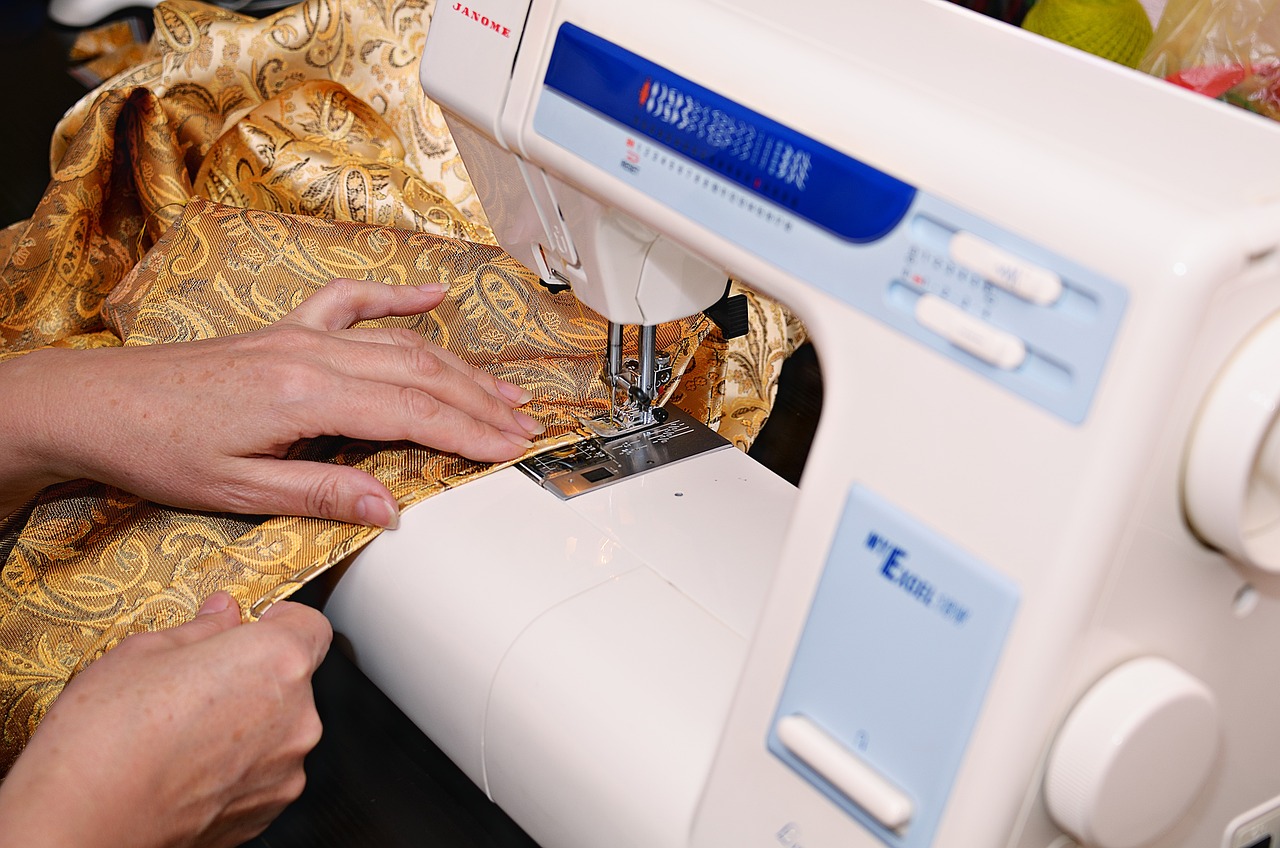
Choosing the Right Fabric
When it comes to sewing, one of the most critical decisions you'll make is . The fabric you select can make or break your project, impacting not only the look and feel of your finished piece but also how easy it is to work with. So, how do you navigate the vast sea of fabric options available? Well, let’s dive in!
First, consider the type of project you’re tackling. Are you making a cozy quilt, a flowing dress, or perhaps a sturdy bag? Different projects require different fabrics. For instance, lightweight fabrics like cotton lawn are perfect for summer blouses, while heavier materials like canvas are better suited for bags and outdoor gear. It's like cooking; you wouldn’t use the same ingredients for a cake as you would for a savory stew!
Next, think about the fabric characteristics. Each fabric has unique properties, such as weight, drape, and stretch, that can influence your sewing experience. For example:
- Weight: Heavier fabrics are more stable and easier to sew, while lightweight fabrics can be more challenging but often result in a beautiful drape.
- Drape: This refers to how the fabric hangs. A fabric with a good drape will flow nicely, making it ideal for garments.
- Stretch: Fabrics with stretch, like jersey, are fantastic for fitted garments but require different sewing techniques than non-stretch fabrics.
Now, let’s talk about the two main categories of fabrics: natural and synthetic. Understanding the difference can help you make a more informed choice. Natural fabrics, like cotton and linen, are breathable and comfortable but may require more care. On the other hand, synthetic fabrics, such as polyester and nylon, are often more durable and resistant to wrinkles but can sometimes feel less breathable. Here’s a quick comparison:
| Fabric Type | Advantages | Disadvantages |
|---|---|---|
| Natural Fabrics | Breathable, comfortable, biodegradable | May shrink, can wrinkle easily |
| Synthetic Fabrics | Durable, wrinkle-resistant, often less expensive | Less breathable, can be less comfortable |
Another vital aspect to consider is fabric care instructions. Each type of fabric has its own set of rules for washing, drying, and ironing. Ignoring these can lead to disastrous results, like shrinking your favorite shirt or ruining the texture of a delicate fabric. Always check the care label before making your selection. For instance:
- Cotton: Typically machine washable but may shrink.
- Silk: Often requires hand washing or dry cleaning to maintain its luxurious feel.
- Polyester: Generally easy to care for, can be machine washed and dried.
In conclusion, choosing the right fabric is all about understanding your project, the characteristics of the fabric, and how to care for it. Take your time, feel the fabrics, and don’t hesitate to ask for advice at your local fabric store. Remember, the fabric is the canvas of your sewing masterpiece, so choose wisely!
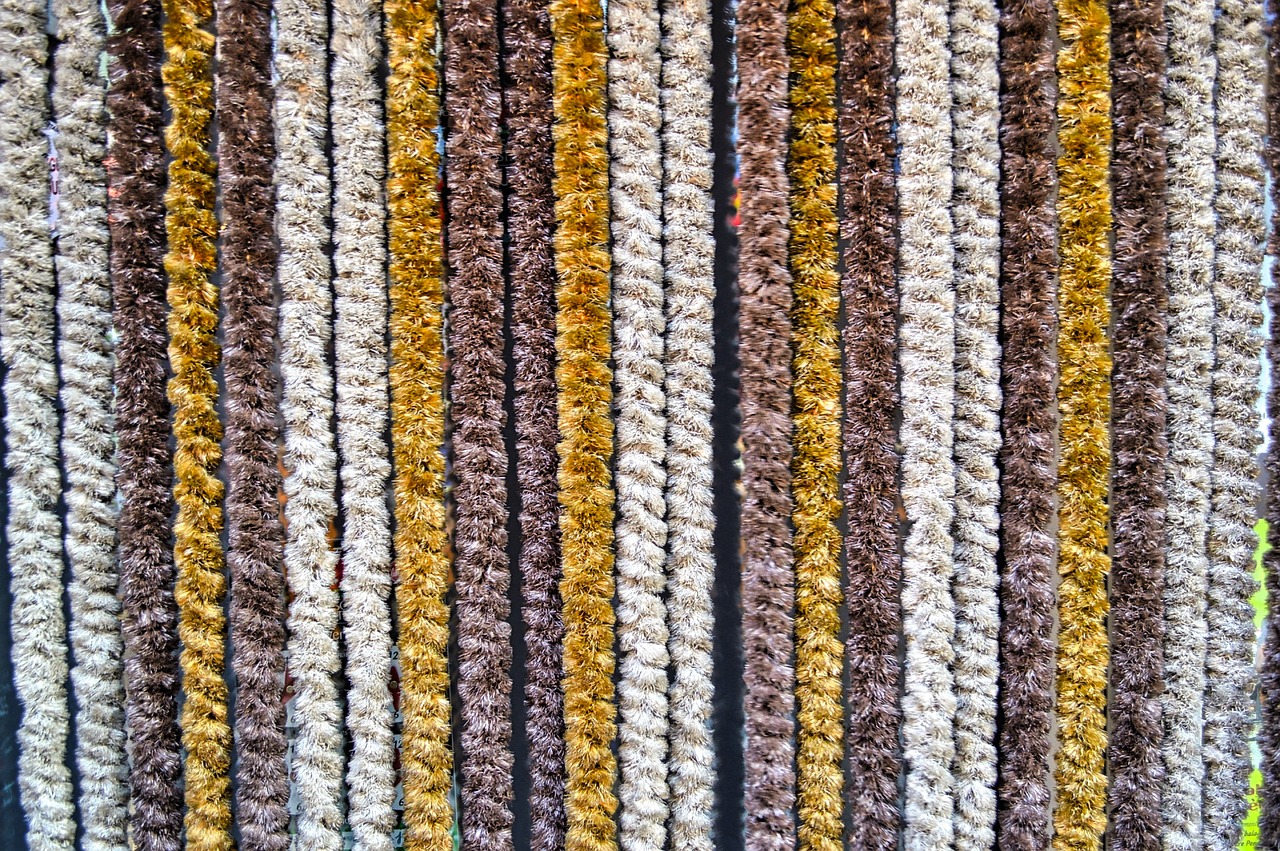
Fabric Characteristics
When it comes to sewing, understanding is like knowing the rules of a game before you start playing. Each type of fabric has its own unique properties that influence how it behaves during the sewing process and how it looks once your project is complete. Let’s dive into some of the most important characteristics you should consider when choosing your fabric.
First up, we have weight. Fabric weight is crucial because it dictates how the fabric drapes and the overall feel of your finished project. Lighter fabrics, such as chiffon or voile, are great for flowy garments like summer dresses, while heavier fabrics like denim or canvas are perfect for structured items like jackets or bags. It’s essential to think about the end use of your project—do you want something airy and light, or sturdy and robust?
Next, let’s talk about drape. Drape refers to how a fabric falls or hangs when it’s cut and sewn. Fabrics with a soft drape, like silk or rayon, create beautiful, flowing designs that can enhance the overall aesthetic of your garment. On the other hand, fabrics with a stiff drape, such as taffeta or upholstery fabric, stand away from the body, giving a more architectural shape. When choosing your fabric, consider how you want it to move and flow—this will greatly affect the final look of your creation.
Another key characteristic is stretch. Some fabrics, like jersey or spandex blends, have a natural elasticity that allows them to stretch and return to their original shape. This is especially important for fitted garments, such as activewear or swimwear. Conversely, non-stretch fabrics, like cotton or linen, maintain their shape but may not provide the same level of comfort or fit. Knowing whether you need a stretchy or non-stretchy fabric will help you choose the right material for your project.
To sum it up, here are the main fabric characteristics to keep in mind:
- Weight: Influences drape and feel.
- Drape: Affects how the fabric hangs and moves.
- Stretch: Determines comfort and fit in garments.
Understanding these characteristics will empower you to make informed decisions when selecting fabric for your sewing projects. Remember, the right fabric can transform your vision into reality, while the wrong choice can lead to frustration and disappointment. So, take your time to explore different fabrics, feel their textures, and envision how they’ll work in your designs.
Q: How do I know what fabric to choose for my project?
A: Start by considering the type of garment you want to create and think about how you want it to fit and flow. Research fabric characteristics like weight, drape, and stretch to find the best match.
Q: Can I mix different types of fabrics in one project?
A: Yes! Mixing fabrics can add dimension and interest to your project. Just be mindful of their characteristics to ensure they work well together in terms of drape and care.
Q: How should I care for my fabrics before sewing?
A: Always pre-wash your fabrics to prevent shrinkage and color bleeding. Follow the care instructions specific to each fabric type for the best results.
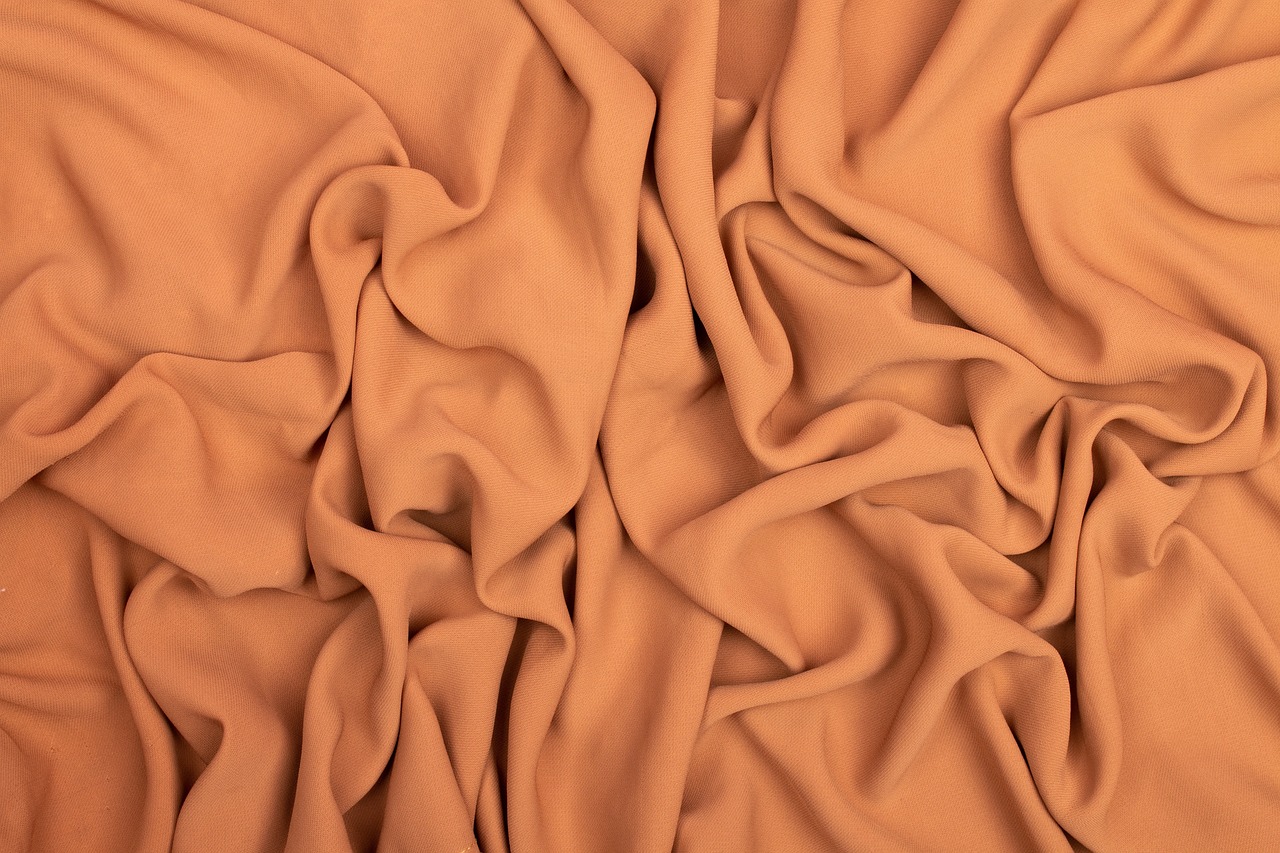
Natural vs. Synthetic Fabrics
When it comes to choosing the right fabric for your sewing projects, one of the first decisions you'll face is whether to go with natural fabrics or synthetic fabrics. Each type has its own unique characteristics, benefits, and drawbacks that can significantly affect your sewing experience and the outcome of your projects. Let's dive into the world of fabrics and explore what makes each option special.
Natural fabrics, such as cotton, linen, wool, and silk, are derived from plants and animals. These materials are often celebrated for their breathability and comfort. For instance, cotton is soft against the skin, making it an excellent choice for clothing, while wool provides warmth and insulation, perfect for colder weather. However, natural fabrics can sometimes be more prone to wrinkles and shrinkage, which is something to keep in mind when selecting your materials.
On the other hand, synthetic fabrics like polyester, nylon, and acrylic are man-made, created through chemical processes. These fabrics are typically more durable and resistant to wrinkles, fading, and shrinking, which can be a huge advantage for those looking for low-maintenance options. For example, polyester is often used in activewear due to its moisture-wicking properties, making it ideal for physical activities. However, synthetic fabrics can sometimes trap heat and moisture, leading to discomfort in warmer conditions.
To help you understand the differences better, here’s a quick comparison table:
| Fabric Type | Advantages | Disadvantages |
|---|---|---|
| Natural Fabrics |
|
|
| Synthetic Fabrics |
|
|
Ultimately, the choice between natural and synthetic fabrics boils down to your specific needs and preferences. Are you looking for something cozy and breathable for everyday wear, or do you need durable fabric for an outdoor adventure? Understanding the characteristics of each type will enable you to make informed decisions that enhance your sewing projects.
As you embark on your sewing journey, consider experimenting with both natural and synthetic fabrics. You might find that a blend of both can offer the best of both worlds, giving you the comfort of natural fibers with the durability of synthetics. Happy sewing!
Q: Can I mix natural and synthetic fabrics in one project?
A: Absolutely! Mixing fabrics can add unique textures and characteristics to your project. Just ensure that the fabrics have similar care instructions for the best results.
Q: Are synthetic fabrics bad for the environment?
A: While synthetic fabrics are not biodegradable, many companies are now producing eco-friendly synthetic options made from recycled materials. Always check labels and choose responsibly when possible.
Q: How do I care for natural fabrics?
A: Natural fabrics often require gentle washing and may need to be air-dried to prevent shrinkage. Always follow the care instructions on the label for the best results.
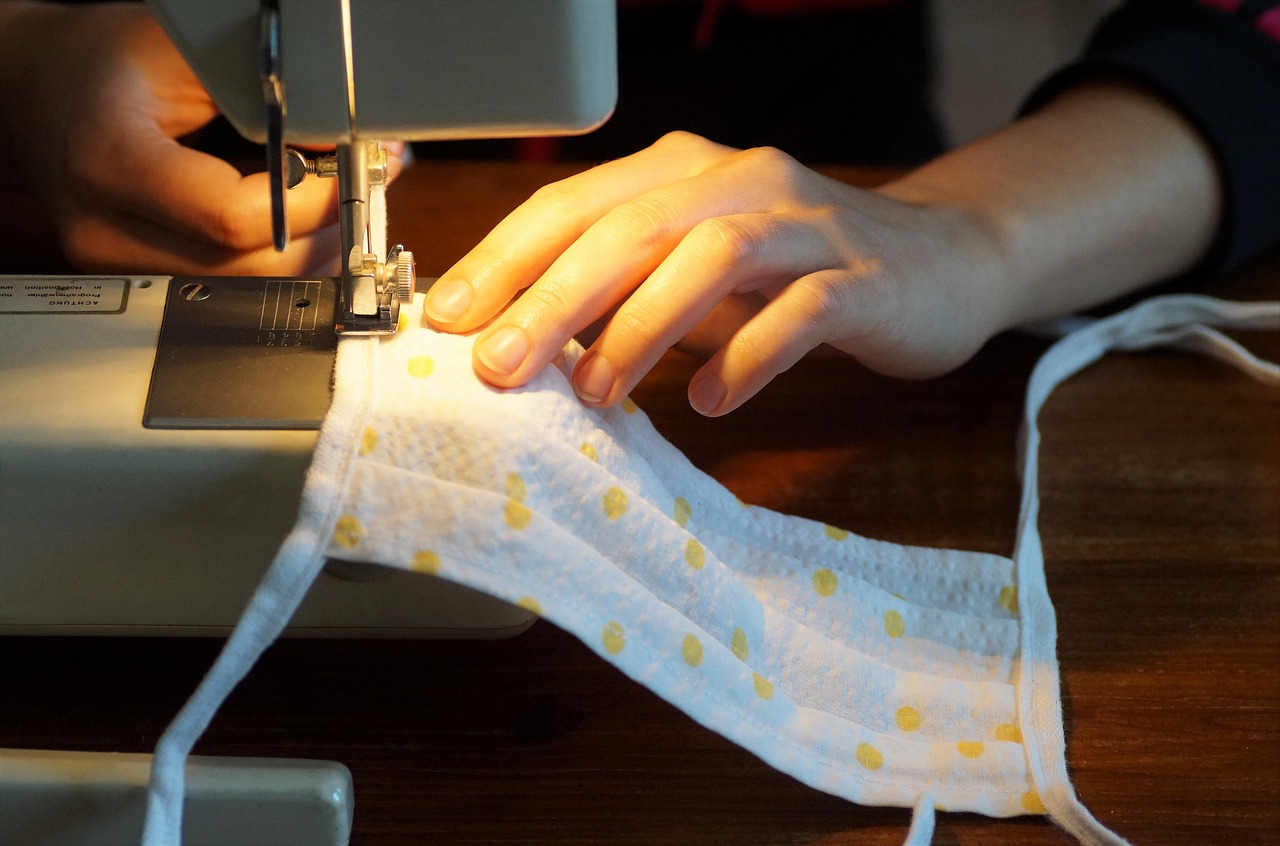
Fabric Care Instructions
Caring for your fabrics properly is essential to ensure that your sewing projects last and maintain their beauty over time. Each type of fabric has its own quirks and requirements, so understanding these can save you from potential disasters down the road. When it comes to washing, drying, and ironing your fabrics, there are a few golden rules that can help you keep everything in tip-top shape.
First and foremost, always check the care label attached to your fabric. This label provides specific instructions regarding washing temperatures, drying methods, and ironing settings. Ignoring these can lead to shrinkage, fading, or even damage to the fabric. For instance, delicate fabrics like silk and chiffon typically require hand washing in cold water, while sturdier materials like cotton can usually handle machine washing.
When washing your fabric, consider using a mild detergent that is free of harsh chemicals. This is particularly important for natural fibers, as they can be more sensitive to strong cleaning agents. If you're working with vibrant colors, it might be wise to wash them separately to prevent any color bleeding. Remember, a little care goes a long way!
Drying can be another tricky area. For most fabrics, air drying is the safest option, especially for those that are prone to shrinking or warping. If you must use a dryer, opt for a low heat setting and remove the fabric while it's still slightly damp to avoid excessive wrinkling. For fabrics that require a bit more love, like wool or cashmere, lay them flat on a clean towel to dry.
Ironing is where many beginners might feel overwhelmed, but it doesn’t have to be complicated. Make sure to always check the fabric's heat setting on your iron. For example, cotton can withstand high heat, while synthetics should be ironed on a low setting. Always use a pressing cloth when ironing delicate fabrics to prevent direct heat contact, which can scorch or melt the fibers. If you’re unsure, it’s better to err on the side of caution and use a lower heat setting.
Lastly, storing your fabrics properly is just as crucial as washing and ironing. Keep them in a cool, dry place, away from direct sunlight to prevent fading. Consider using breathable storage solutions like cotton bags or bins to keep dust away while allowing air circulation. Avoid hanging heavy fabrics as this can cause them to stretch out of shape.
In summary, taking the time to understand and follow these will not only enhance the longevity of your projects but also keep them looking fresh and new. Remember, each fabric type is unique, so don’t hesitate to do a bit of research or consult with your local fabric store if you have specific questions!
- What is the best way to wash delicate fabrics? - Hand wash in cold water with a mild detergent.
- Can I use a dryer for all types of fabric? - No, always check the care label; some fabrics should air dry.
- How do I prevent my fabric from fading? - Store fabrics away from direct sunlight and wash with care.
- What should I do if my fabric shrinks after washing? - Always pre-wash your fabric before sewing to avoid surprises.
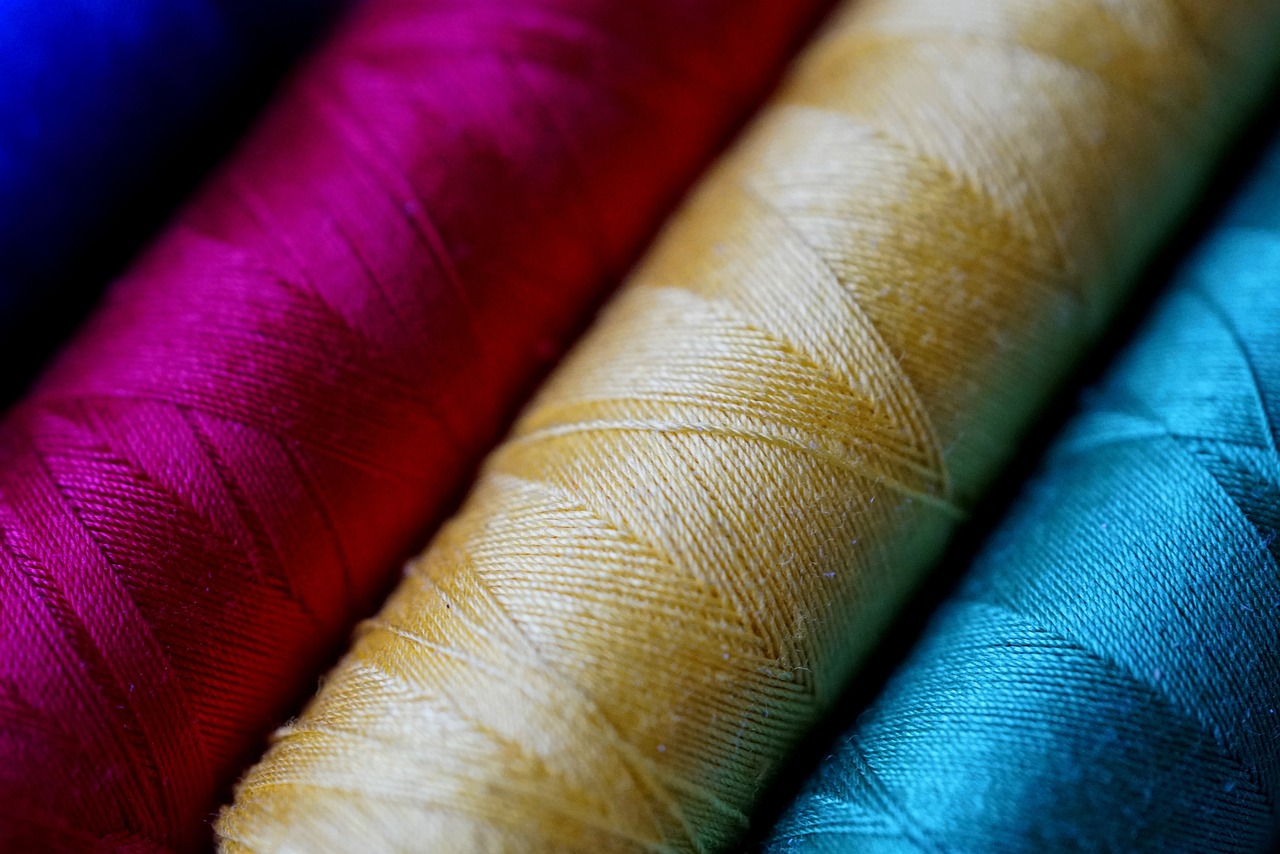
Understanding Patterns
When it comes to sewing, understanding patterns is like learning the language of fabric. Patterns are your roadmap, guiding you through the intricate journey of transforming fabric into a finished garment. For beginners, this might feel overwhelming at first, but don't fret! With a little patience and practice, you'll soon be able to decode those symbols and lines that seem to dance across the paper.
First things first, let's talk about what a sewing pattern actually is. Essentially, a pattern is a template that outlines the shapes and sizes of the pieces you'll need to cut from your fabric. These pieces come together to create your final project, whether it's a dress, a shirt, or even a cozy quilt. Patterns can be purchased from fabric stores or online, or you can even make your own if you’re feeling adventurous!
Now, when you look at a pattern envelope, you'll often find various pieces of information that are crucial for your sewing success. Here’s what to pay attention to:
- Size: Patterns come in multiple sizes, so it’s essential to choose the one that corresponds to your measurements. Remember, sizing can vary between brands, so always check the size chart!
- Fabric Recommendations: Each pattern will suggest specific types of fabric that work best for the design. This is crucial because the fabric can significantly affect the drape and fit of your finished piece.
- Notions: These are the additional items you might need, like zippers, buttons, or interfacing. The pattern will list everything required to complete the project.
- Skill Level: Patterns often indicate whether they are suitable for beginners, intermediates, or advanced sewists. This can help you select projects that match your current skill set.
Once you've chosen your pattern, it's time to dive into the symbols and markings. This is where many beginners feel lost, but understanding these symbols is key to sewing success. Here’s a quick overview of some common pattern symbols:
| Symbol | Meaning |
|---|---|
| Circle | Marking for darts or other design features. |
| Triangle | Indicates where to match seams or notches. |
| Arrow | Shows the grainline of the fabric. |
| Dashed Line | Represents cutting lines or seam allowances. |
Understanding these symbols will help you accurately cut and sew your fabric pieces together. It’s like learning to read a map—you’ll need to know where you’re going before you can get there!
Another important aspect of patterns is the layout guide, which shows you how to arrange your fabric pieces on the fabric. This step is crucial for ensuring that you use your fabric efficiently and that the pieces are cut in the correct orientation for the best fit. Following the layout guide can save you fabric and prevent mistakes, so don’t skip this step!
In conclusion, mastering the art of reading patterns is an essential skill for any beginner sewist. Think of it as learning a new language; with time and practice, you’ll become fluent in the world of sewing patterns. So grab your favorite pattern, some fabric, and let your creativity flow!
Q: Can I use any fabric with any pattern?
A: Not necessarily! Each pattern comes with fabric recommendations that are tailored to the design. Using the wrong fabric can affect the fit and drape of your finished piece.
Q: What if I’m in between sizes?
A: If you're between sizes, you can either choose the larger size and make adjustments or blend between sizes by grading the pattern. This ensures a better fit for your unique shape.
Q: How do I know if a pattern is beginner-friendly?
A: Most patterns will indicate the skill level on the envelope. Look for patterns labeled as “easy” or “beginner” to start with simpler projects.
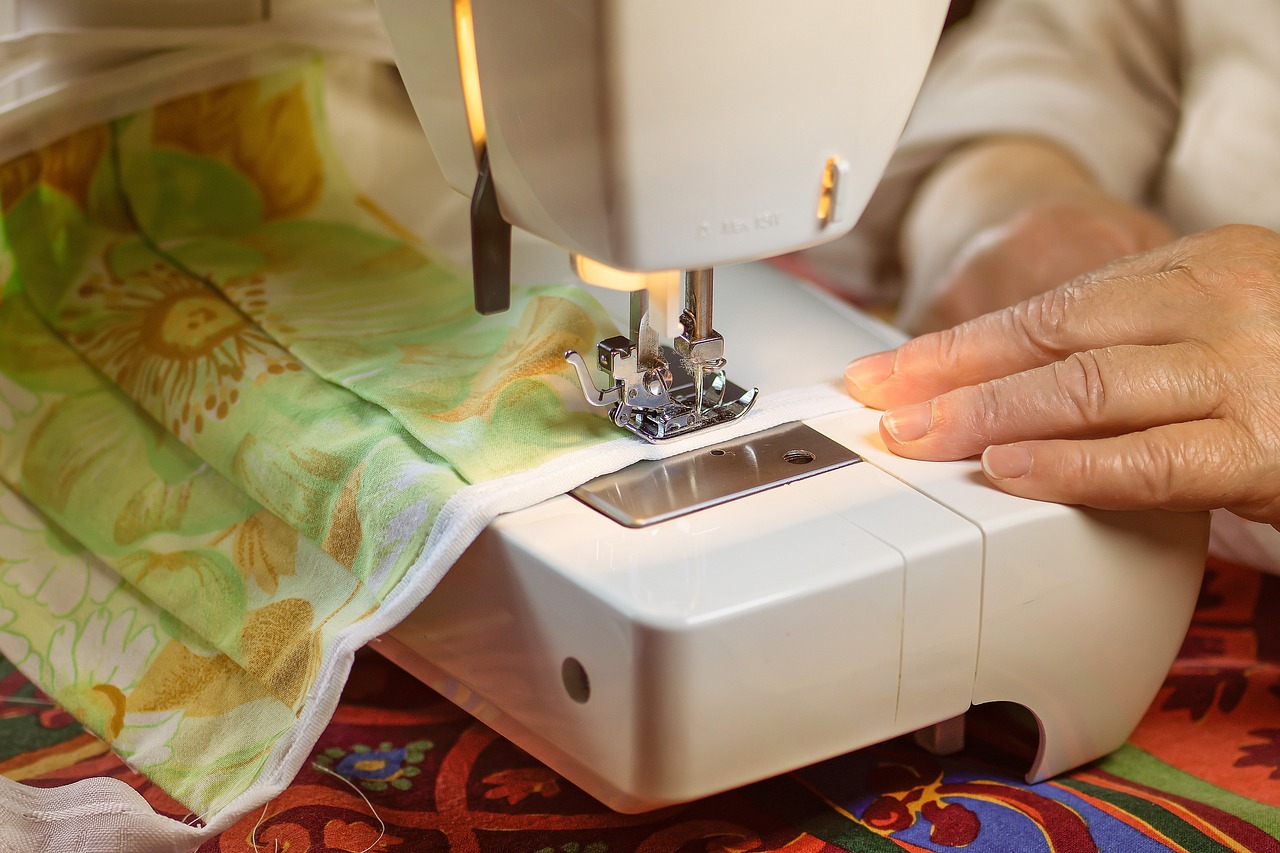
Sewing Techniques for Beginners
Getting started with sewing can feel like stepping into a new world filled with endless possibilities. But before you dive into your first project, it's essential to arm yourself with some fundamental sewing techniques. Mastering these skills will not only boost your confidence but also help you create beautiful, well-constructed pieces. So, let’s unravel the basics!
First up, we have the basic stitches. Think of these as the building blocks of sewing. The most common stitch you'll encounter is the straight stitch. It's simple yet effective, perfect for seams and hems. You can create this stitch using a sewing machine or even by hand, making it versatile for any project. Another essential stitch is the zigzag stitch. This one’s a game-changer, especially when working with stretchy fabrics. It helps to prevent fraying and allows the fabric to maintain its shape, just like a good pair of yoga pants!
As you become more comfortable with basic stitches, it’s time to explore some finishing techniques. These methods are crucial for giving your projects a polished look and enhancing their durability. One popular technique is serging, which trims the edges of your fabric while simultaneously stitching them to prevent fraying. If you don't have a serger, don’t fret! You can achieve a similar effect with a zigzag stitch on your regular sewing machine. Another method is bias binding, which involves encasing raw edges in a strip of fabric cut on the bias. This technique not only adds a decorative touch but also reinforces the edges, making your project look professional.
But wait, there's more! As you delve deeper into sewing, understanding how to read patterns is vital. Patterns are like the roadmap to your sewing project. They provide you with the necessary shapes, sizes, and instructions to follow. Familiarize yourself with the pattern symbols, such as notches, grainlines, and seam allowances. These little icons might seem confusing at first, but once you get the hang of them, they’ll guide you through the entire process like a trusted friend. If you’re feeling overwhelmed, consider starting with a simple pattern designed for beginners. This will help you build your skills without the frustration of complex instructions.
In addition to these techniques, practice is key! The more you sew, the more comfortable you'll become with your machine and the various techniques. Don't be afraid to experiment with different fabrics and stitches. Each project is a chance to learn something new, so embrace the journey!
- What sewing machine should I start with? A basic sewing machine with straight and zigzag stitch capabilities is ideal for beginners.
- How do I choose the right thread for my fabric? Match the thread type to your fabric; for example, use cotton thread for cotton fabrics and polyester thread for synthetic fabrics.
- Can I sew without a pattern? Absolutely! Many beginners start by sewing simple items without patterns, like pillowcases or tote bags.
- What is the best way to learn sewing techniques? Online tutorials, sewing classes, and practice are great ways to learn and improve your skills.
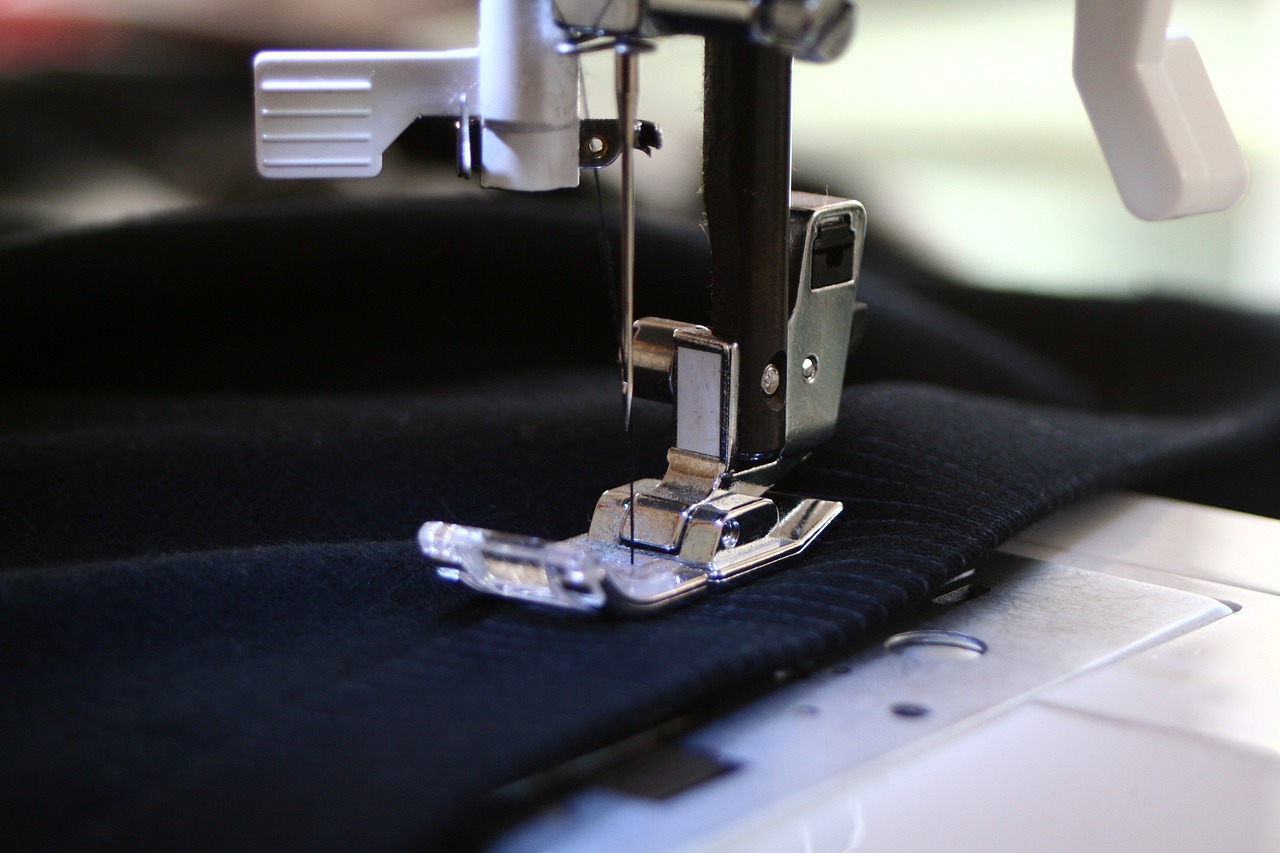
Basic Stitches
When you first dive into the world of sewing, one of the most exciting yet daunting aspects is mastering the . Think of these stitches as the foundation of your sewing journey—like learning the alphabet before you can write a novel. Understanding these stitches will not only boost your confidence but also empower you to tackle various projects with ease.
The most fundamental stitch is the straight stitch. This stitch is your best friend, perfect for seams and hems. It’s straightforward: just a simple line of stitching that holds two pieces of fabric together. Imagine it as the glue that binds your project. Most sewing machines have a straight stitch option, and it’s the first stitch you should become familiar with. The key to a great straight stitch is keeping an even tension and a steady pace while sewing.
Next up is the zigzag stitch, a versatile stitch that can do wonders for your projects. This stitch zigzags back and forth, which is fantastic for preventing fabric edges from fraying. Think of it like a protective barrier around your fabric. It's particularly useful for stretch fabrics, as it allows the seams to stretch without breaking. If you’re working with knits or any fabric that has a bit of give, this stitch is a must-know.
But wait, there’s more! Let’s not forget about the backstitch, a hand-sewing technique that creates a strong, durable seam. It’s like the superhero of stitches, especially useful for areas that experience a lot of stress, like the crotch of pants or the underarms of shirts. To create a backstitch, you simply stitch backward over your previous stitches, which secures everything in place. It's a great technique to have in your arsenal, especially for those times when your sewing machine is in the shop.
Now, if you’re feeling adventurous, you might want to explore decorative stitches. These stitches add a personal touch to your projects and can elevate a simple garment into something truly special. Many modern sewing machines come equipped with a variety of decorative stitch options, so don’t hesitate to experiment! Just remember, while they’re fun, they can also be a bit tricky, so practice on scrap fabric first.
To summarize, here’s a quick overview of the basic stitches:
| Stitch Type | Best For | Notes |
|---|---|---|
| Straight Stitch | Seams, hems | Most common; essential for beginners. |
| Zigzag Stitch | Preventing fraying, stretch fabrics | Great for knits and raw edges. |
| Backstitch | High-stress areas | Strong and durable; ideal for hand sewing. |
As you practice these stitches, remember that sewing is a journey. Don’t rush it! Each stitch you make is a step toward mastering your craft. So grab your fabric, thread your needle, and let your creativity flow. You’ll be amazed at what you can create once you’ve got these basic stitches down!
- What is the most important stitch to learn first? The straight stitch is fundamental and should be your starting point.
- Can I use a zigzag stitch on woven fabrics? Yes, it can be used, but it’s especially beneficial for knits.
- How do I fix a mistake in my stitching? Use a seam ripper to carefully remove the stitches and try again!
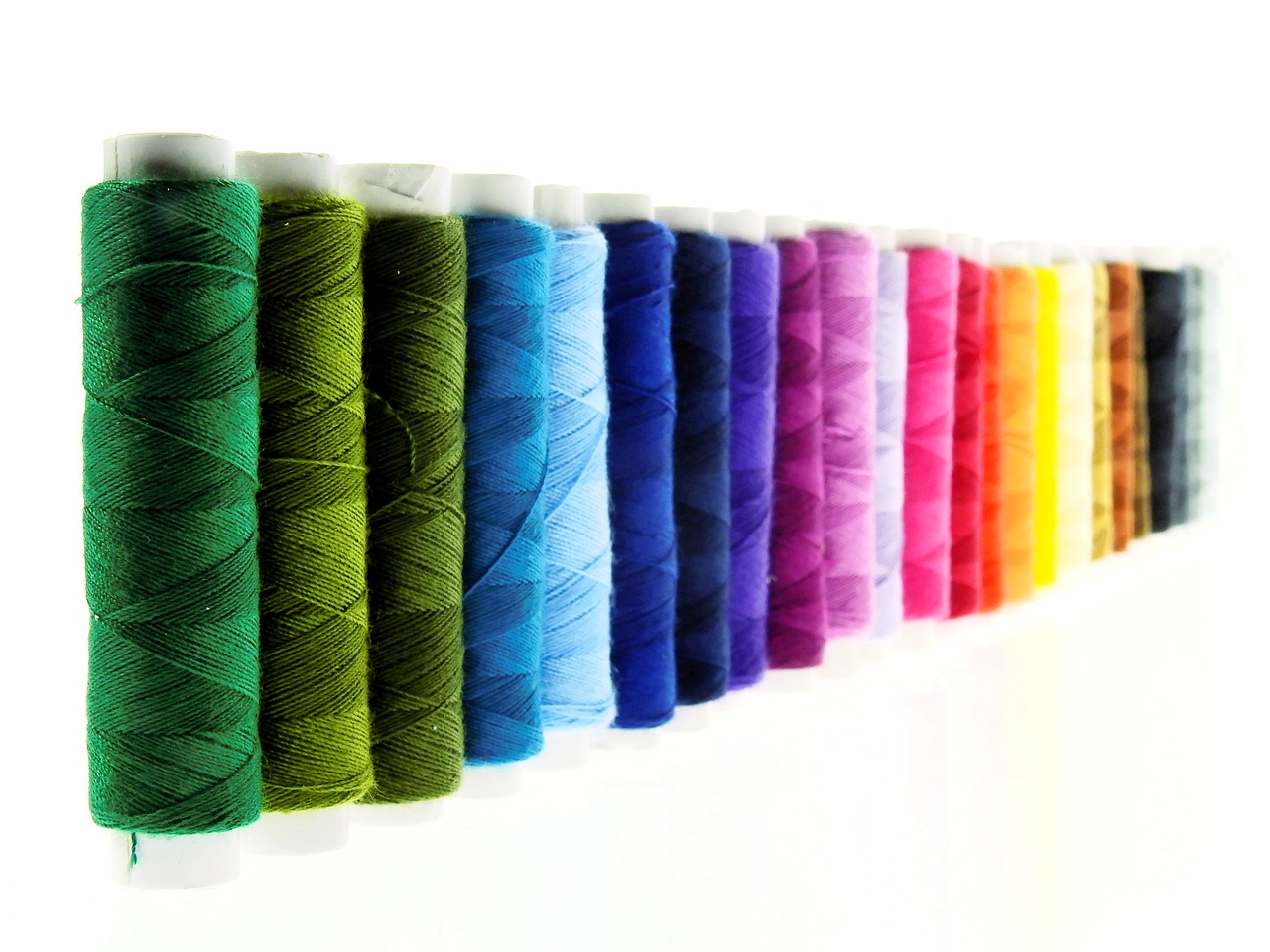
Finishing Techniques
This article covers essential tips and information for beginners preparing to sew, including tools, techniques, and common practices to ensure a successful sewing experience.
Understanding the basic tools required for sewing is crucial. This section will outline the must-have items that every beginner should have in their sewing kit.
Selecting the appropriate fabric is key to successful sewing projects. This part will discuss different fabric types and how to choose the best one for your project.
Each fabric has unique properties that affect its use in sewing. Here, we will explore characteristics like weight, drape, and stretch to help you make informed choices.
This section compares natural and synthetic fabrics, detailing their advantages and disadvantages to guide you in selecting the right material for your needs.
Understanding how to care for different fabrics is essential. This section provides insights into washing, drying, and ironing various fabric types to maintain their quality.
Learning how to read and understand sewing patterns is vital for beginners. This section will break down pattern symbols and terminology to simplify the process.
This part will introduce fundamental sewing techniques that every beginner should master, from basic stitches to more complex methods.
Familiarizing yourself with basic stitches is essential for any sewing project. This section will cover straight stitches, zigzag stitches, and their applications in sewing.
Finishing techniques are like the cherry on top of your sewing project; they are crucial for achieving a polished look that impresses. When you’ve put in the effort to create something beautiful, you want to ensure it looks just as good on the outside as it does on the inside. Let’s explore some popular finishing techniques that can elevate your sewing game.
One of the most common methods is serging, which involves using a serger machine to create a clean edge on your fabric. This technique not only prevents fraying but also gives your seams a professional finish. Imagine the satisfaction of your fabric edges looking neat and tidy, just like those store-bought clothes!
Another technique worth mastering is bias binding. This method involves encasing raw edges of fabric with a strip of fabric cut on the bias, which helps it curve around corners beautifully. It’s perfect for finishing necklines or armholes, adding both durability and a touch of style. Plus, it’s a great way to use up those fabric scraps you might have lying around!
In addition to these, you may also want to consider French seams, which are ideal for lightweight fabrics. They encase the raw edges within the seam itself, making your finished project look neat and professional. It’s like giving your fabric a little hug, ensuring no fraying occurs!
To summarize, here are some key finishing techniques that can enhance your sewing projects:
- Serging: Prevents fraying and gives a professional finish.
- Bias Binding: Encases raw edges, perfect for necklines and armholes.
- French Seams: Ideal for lightweight fabrics, encasing raw edges for a neat look.
By incorporating these finishing techniques into your sewing practice, you'll not only improve the durability of your projects but also add a touch of flair that will make them stand out. So, the next time you finish a sewing project, take a moment to consider how a simple finishing touch can transform your work from good to extraordinary!
Q: What is the best way to prevent fraying on fabric edges?
A: Using techniques like serging, zigzag stitching, or bias binding can effectively prevent fraying on fabric edges.
Q: Can I use a regular sewing machine for finishing techniques?
A: Yes, many finishing techniques can be done on a regular sewing machine, but a serger will make the process quicker and more efficient.
Q: How do I choose the right finishing technique for my project?
A: Consider the type of fabric and the look you want to achieve. Lightweight fabrics may benefit from French seams, while heavier fabrics might be better suited for serging.
Frequently Asked Questions
- What essential tools do I need to start sewing?
To kick off your sewing journey, you'll want to gather some essential tools. These include a good pair of fabric scissors, pins, a measuring tape, a seam ripper, and of course, a sewing machine. Think of these tools as your trusty sidekicks that will help you create beautiful projects!
- How do I choose the right fabric for my project?
Choosing the right fabric is like picking the perfect paint for a masterpiece! Consider the type of project you're working on and the fabric's characteristics. For instance, lightweight fabrics are great for summer dresses, while heavier fabrics work well for jackets. Don't forget to check the fabric's drape and stretch as well!
- What are the differences between natural and synthetic fabrics?
Natural fabrics, like cotton and linen, are breathable and generally more comfortable to wear, while synthetic fabrics, such as polyester and nylon, are often more durable and resistant to wrinkles. Each has its perks, so think about your needs before making a choice!
- How should I care for my fabrics?
Caring for your fabrics is crucial to keep them looking fresh! Always check the care instructions on the label. Most fabrics can be machine washed, but some may require gentle handling. Ironing is also important—be sure to use the right heat setting for your fabric type to avoid damage.
- What are the basic sewing stitches I should learn?
As a beginner, you'll want to master a few basic stitches like the straight stitch and zigzag stitch. The straight stitch is your go-to for most seams, while the zigzag stitch helps prevent fraying. Think of these stitches as the foundation of your sewing skills!
- What finishing techniques should I know?
Finishing techniques give your projects that professional touch! Techniques like serging and bias binding help prevent fraying and add durability. It's like giving your garment a nice, polished look that says, "I made this!"
- How can I read and understand sewing patterns?
Reading sewing patterns might seem daunting at first, but once you get the hang of it, it's like reading a treasure map! Familiarize yourself with the symbols and terminology used in patterns. Understanding these will make your sewing experience smoother and more enjoyable.



















